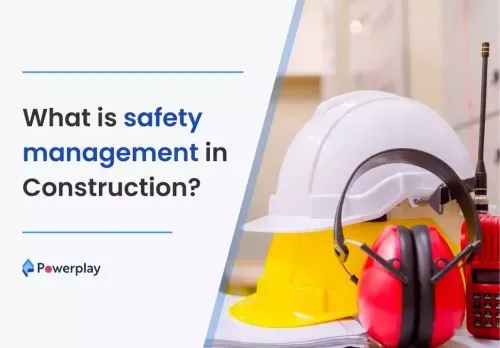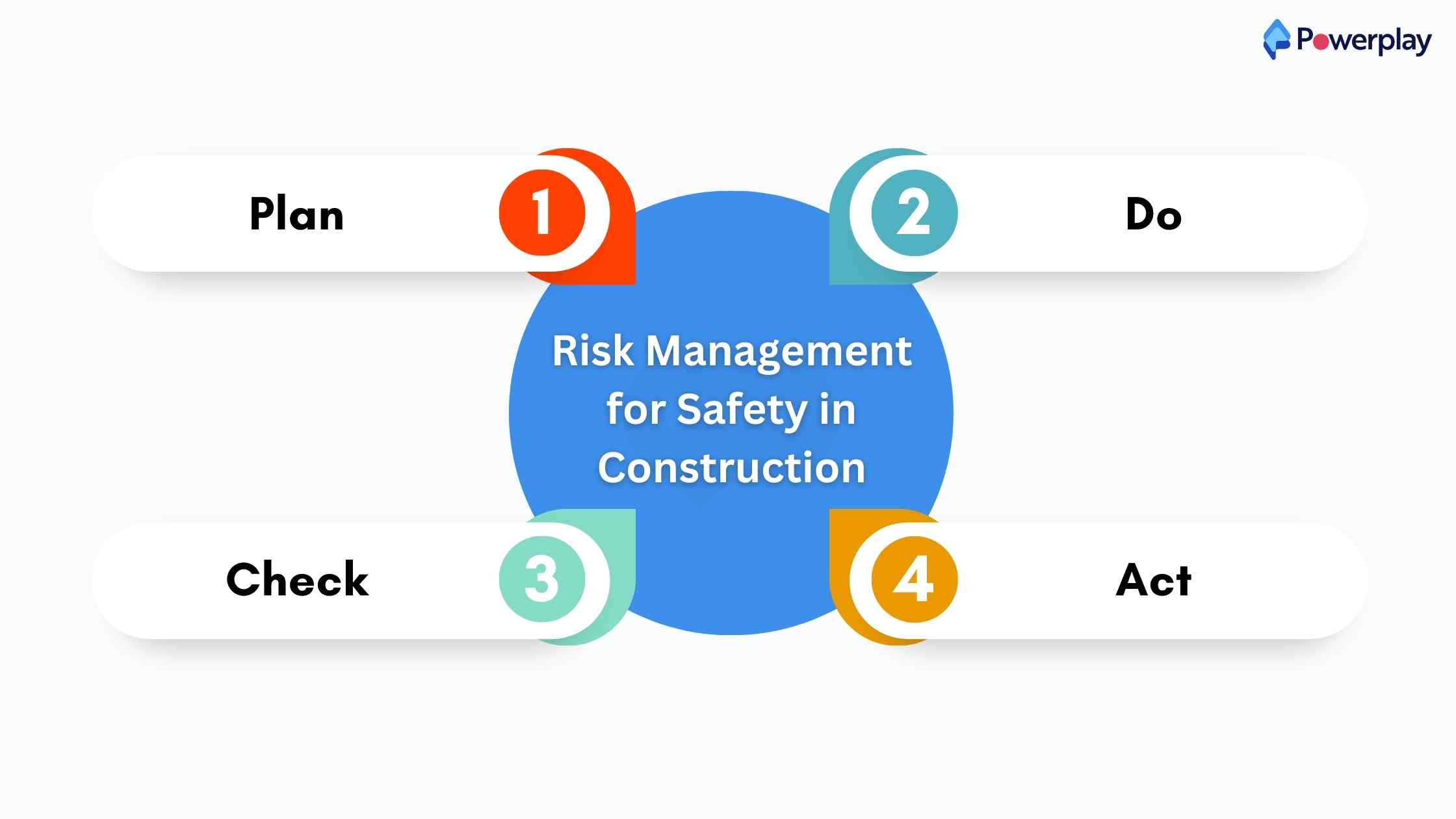What is safety management in Construction?
-
Kumar Abhishek Anand
- October 11, 2023

Table of Contents
ToggleSafety in Construction
Construction industry sites are one of the most hazardous workplace environments to work in with regard to health and safety of employees. There is high risk in the construction industry because of the production processes, labor intensive characteristics and occupational mishaps that result in large scale financial losses and bad reputation of the firm.

Construction site safety is a very important requirement in the construction industry that is often neglected on project sites. Without proper safety regulations employees are prone to minor and major accidents on a regular basis because of the dangerous and dynamic environment of the construction industry.
Some of the most common hazards in the construction industry are:
• Falling objects
• Exposure to chemical substances
• Fall from heights
• Dust inhalations
• Vehicular and equipment accidents
• Working in confined spaces
• Slips on sites
• Fire and explosions
• Electrocutions
• Defective Safety Equipments
• Chemical spills
Most accidents in the construction industry are caused due to lack of education about construction safety management and training. Negligence and ignorance on the part of any individual or authorities can also result in hazards.
Need for Safety Management
The construction industry has taken numerous steps to avoid accidents on site and provide workers with a safe working condition and ensure safe practices but even now requisite safety in the construction industry is still a distant dream. Due to the enormity of the construction industry and subsequent high number of accidents the need for a safety management system in construction is of utmost importance. Safety management on construction sites improves the working condition against hazards related to construction equipment, materials and practices.
Safety Management Process
A safety management system can assist in systematically identifying hazards and controlling risks associated with it, while assuring that these controlling steps are effective in aiding construction site safety. Safety management process roughly outlines the following steps:
• Identifying risks associated with the workplace in consideration during the planning stage and pre-deciding suitable controls and steps that need to be implemented in •Order to avoid any accident or damage to property and ensure construction safety.
• Monitoring of work to detect any actions early that may result in mishaps and to check if safe practices are being followed and safe conditions are being maintained.
• Enforcing and promoting effective communication across all levels of the organisation
• Protection of neighbouring public and private properties.
• Providing regular safety education and training along with attractive incentives programs for using safe operating methods.
• Abiding by the standard occupational health and safety regulations.
Importance of Safety in the Construction Industry

Public Protection– Many construction projects have public bustling around and across the construction site. Construction safety management systems in such places can prevent any harm that may be caused to the public due to construction processes. Construction site safety thus also ensures public safety.
Efficient usage of Time and Money– Construction safety aids in saving excess time and money that has to be spent in case of any mishaps. These unwanted situations may take up excessive time in recovering from these downsides. Operating costs are increased due to compensation claims from injured employees. In case of outsiders getting injured, a lawsuit may be filed against the project owner that might ultimately prove to be a huge financial burden. Irregular and improper handling and maintenance of equipment increase time and money expense. Construction site safety can thus be improved by adopting safety management systems.
Promote Compliance– On some construction sites even if there has been no history of site accidents, an unsafe workplace environment is always prone to mishaps. The regulatory compliances that have been set in the contracts need to be enforced if employees show lax attitude in abiding by them. The reason being, if these regulations are flouted the company is being put at risk due to the unsafe environment being developed on site that can incur damage to monetary as well as quality aspects of the project. Abiding by the regulatory compliances not only protects the employees but also the organisation on the whole. Construction and process safety management is essential to protect employees from safety hazards, protect the public in the surroundings and keep the job on track and schedule. Promoting safety cultures on construction sites protects everybody related to the project.
Safe Site Management– In order to promote site safety, the safety manager must build a strong relationship with the employees so that they follow the safety manager. The workers must realise the importance of process safety management for their respective tasks and that the safety regulations have been enforced upon them to make them’ safe. The safety manager must take steps as and when necessary to promote and direct safe practices and safe working conditions. A responsible safety manager has the following responsibilities:

a. Worker safety and health must be considered as occupational value.
b. Fully determined to prevent accidents, protect workers and completely improve safety and health culture.
c. Sufficient resources must be provided to implement and maintain safety and health of employees .
d. Proper medical kits must be installed at several locations as per worker density. Site safety equipment such as fire extinguishers and water cannons can also be put on site.
e. Accessible toilet spaces should also be provided on site to avoid workers getting worked up due to sanitary issues.
The workers must be duly presented to demonstrate and communicate safety and health management systems.
Risk Management for Safety in Construction
Risk management procedures for occupational site health and safety can be roughly categorised as in four simple steps, that are:
• Plan– The safety policies and procedures must be planned as per risk assessment report
• Do– Enforcements of policies and procedures.
• Check– In order to check for relevance, effectiveness and efficiency of implementation, the safety performance is measured.
• Act– Proper remedial measures must be adopted in order to prevent safety and health issues.
A risk management system for safety on construction sites can be considered more of a method rather than a product and this method has to be documented each time it is being implemented anywhere on the construction project so that the safety incharge may keep a check on its effectiveness and can also be used auditing as well as report preparation.
Safety in Construction is of paramount importance for the construction industry because accidents and mishaps are caused due to negligence and improper safety practices and workplace conditions. As a safety management system is part of the project management process, enough provisions must be made in this process to feed and document safety processes being followed on site. Construction project management softwares can assist in promoting safety systems across different construction sites by updating and analysing the process being followed.

Powerplay software is an allrounder in construction project management that can assist clients, contractors and all essential team members to track progress and subsequently act accordingly.
Share
Kumar is a digital content professional with more than 2 years of experience in Blog writing, copywriting and scripting. His passion lies in the art of creating convincing content that plays a major role in converting leads for SAAS businesses.












